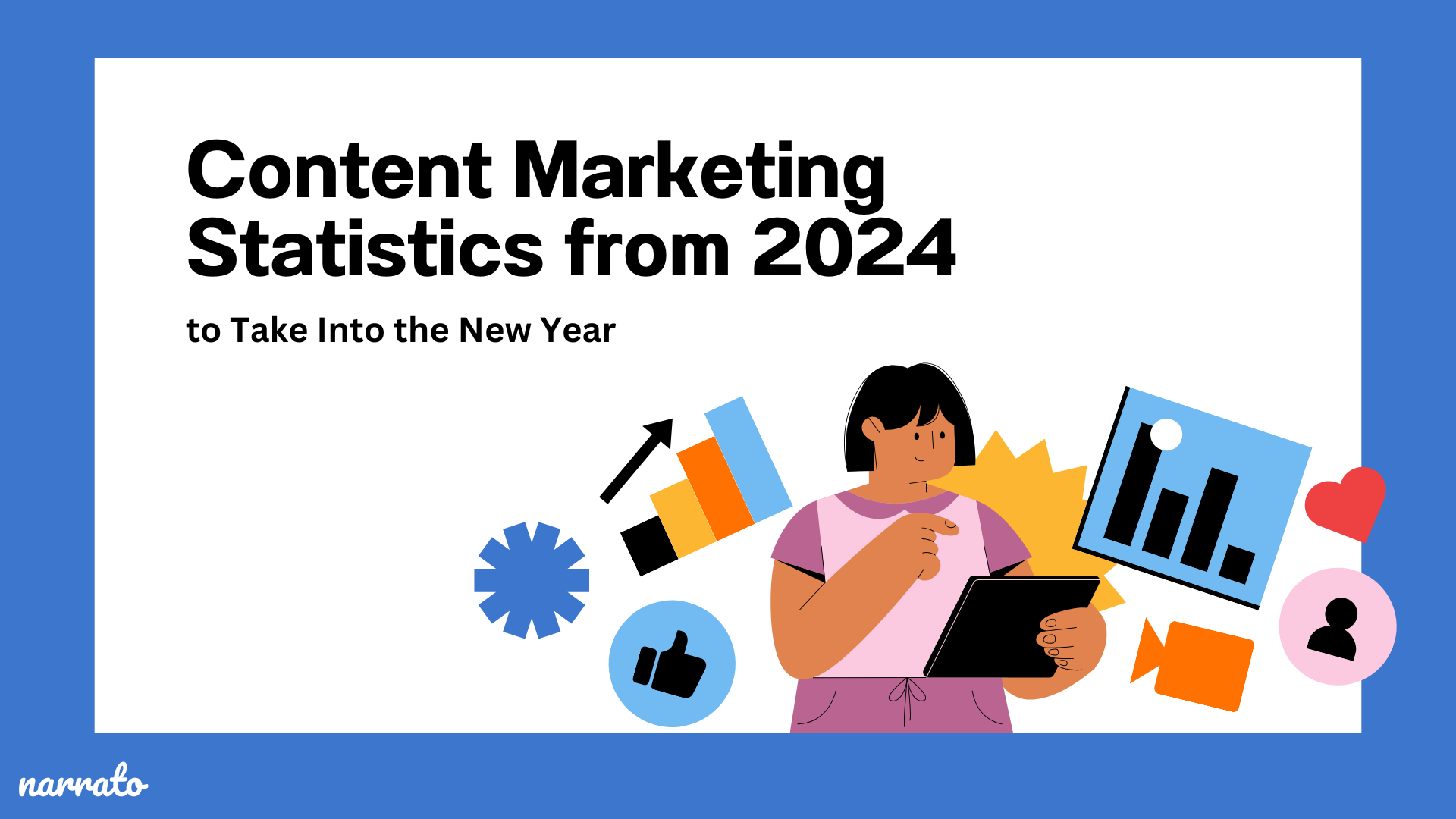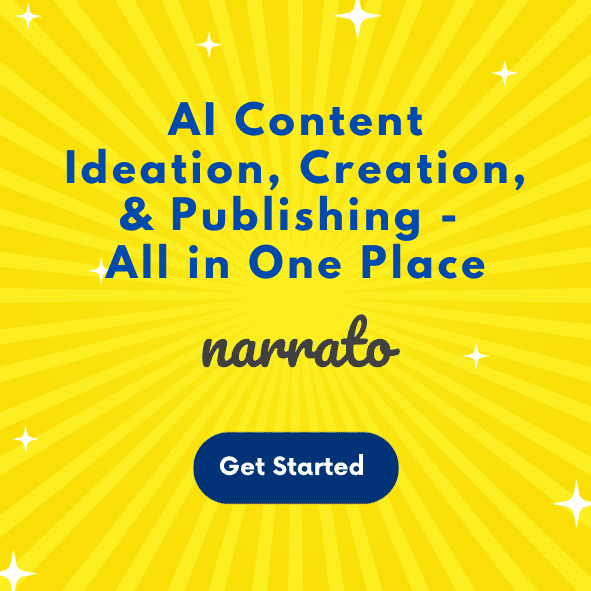To create an effective marketing strategy, it’s important to embrace the latest trends like AI in content and marketing. AI tools are changing the marketing game by automating tasks and offering insights into customer behavior. Narrato AI, for instance, enables brands and businesses to generate content much faster, while reducing costs.
If you keep track of content marketing statistics, this compilation of study findings from reliable names in the digital marketing world is for you. With 2025 on the horizon, review what fellow marketers have to say to adopt new approaches early and align your content strategy with what your audience values and engages with most. Dive in!
- B2B content marketing statistics
- Video marketing statistics
- Content creation statistics
- Content marketing ROI statistics
- Content strategy statistics

B2B content marketing statistics
👉 B2B marketers believe they can do better (and are counting on AI to progress)
In the Content Marketing Institute’s annual B2B Content Marketing Benchmarks, Budgets, and Trends: Outlook for 2025 report, many marketers voiced their dissatisfaction with the state of content marketing. The inability to scale content creation and a lack of adequate resources appear to be holding marketers back. To address these challenges, many businesses choose to outsource content, allowing them to leverage external expertise and focus on core activities.
- One in three B2B marketers report having a scalable content creation model. In fact, nearly 45% face challenges in this area, with 20% uncertain about their scalability status. The main hurdle? A shortage of resources.
- B2B marketers agree that limited resources and time affect their content marketing strategy. According to Forbes, by 2030, the global workforce might face a shortage of 85 million individuals. Business leaders must see this not as a temporary setback but as a fundamental shift in the business landscape.
AI is a potential solution, helping marketers scale content and streamline workflows for more efficient content management. Additionally, if you have B2B ecommerce platforms, AI can enhance your content strategies, improving efficiency and customer engagement. It isn’t surprising then that AI adoption in B2B content marketing is gathering pace.
👉 AI adoption increasing
A considerable 81% of B2B marketers now incorporate generative AI tools into their operations, a notable increase from 72% the previous year. The percentage of marketers lacking AI usage guidelines has decreased to 45%, down from 61%, highlighting a move towards more structured AI adoption.
Among those using generative AI, 51% report a reduction in monotonous tasks, 45% observe more efficient workflows, 42% note improved content optimization, and 38% enjoy enhanced creativity. Looking ahead, 56% of B2B marketers anticipate prioritizing AI-powered automation by 2025.

Source: CMI
👉 Top performers more likely to use AI
Successful content marketers are equipped with the right technology to manage content organization-wide and have a scalable content creation model that delivers desired results. They also expect their content team size to grow in 2025. As statistics indicate, human-AI pairing appears to be a safe bet for companies looking to outpace their peers.
👉 Event marketing the #1 B2B marketing technique
Organizations bank on event marketing, in-person or virtual, for lead generation, relationship-building, thought leadership, and executive engagement. In-person events are the number one B2B marketing technique and 47% of event marketers say that in-person events have the highest ROI.
B2B events today are exciting, engaging, and rewarding (think swag, prizes, discounts on certifications, and the like). From the Red Hat and Adobe Summits to ElasticON events, enterprises leave no stone unturned to create memorable in-person event experiences that help strengthen connections with existing and would-be clients.
Content marketing plays a key role in supercharging event success. Still, 63% of marketers say that they fail to maximize the value of event content, with large enterprises facing an even higher figure of 72%. With some help from AI, marketers can avoid leaving value on the table:
- In the post-event phase, AI can significantly enhance the efficiency of content creation and event management, allowing for substantial savings in both time and resources. For example, the use of Narrato AI to write invitation emails and social media posts promoting the event. In fact, the AI tool can be used to create all types of event marketing assets and for each event milestone.
- Post-event, AI provides a seamless way to repurpose event content, helping marketers to prolong its usefulness and reach a broader audience. For example, repurposing the post-event brief into email for clients or management, or a report for the in-house marketing team.
👉 Email marketing continues as a popular form of B2B content marketing
In 2024, B2B tech organizations used email marketing 44% of the time and newsletters 39% of the time. Curated emails and newsletters are key to an effective marketing strategy.
Video marketing statistics
👉 Video marketing will keep leading the way
Vidyard’s Michael Litt wasn’t joking when he said the play button was the most compelling call-to-action on the web. Video is an unignorable aspect of marketing success, and more and more, marketers are swearing by video marketing, as Wyzowl’s survey finds:
- Starting video marketing: 68% of marketers who don’t currently use video plan to start in 2024.
- Video as a priority: 88% of video marketers consider it a key part of their marketing strategy.
- Most popular video types:
- Video testimonials are the most common (39%).
- Other popular types include explainer videos (38%), social media clips (34%), product demos (32%), and ads (30%).
- Companies also use videos for customer service, onboarding, training, and app demos, with each at around 22%-28%.
- AI in video creation: 75% of video marketers use AI tools to create or edit their videos.
- Budget plans: 85% of marketers plan to spend the same or more on video marketing in 2024.
- Return on investment: 90% say video marketing gives them a good return on investment (ROI).
👉 Video marketing goals and tactics are changing
The HubSpot Blog’s 2024 Video Marketing Report, uncovered video marketing tactics and experiences based on data from more than 500 video marketers:
- Video marketing’s effectiveness: 73% of marketers say video marketing helps them achieve their business goals.
- Key metrics to track: Engagement (likes, comments, shares) is considered the most important metric, followed by watch time and view count.
- Top goals for video marketers:
- The primary goals include increasing brand awareness (52%), boosting engagement (38%), and driving revenue and sales (36%).
- Over 25% also focus on growing their online community, while 23% use videos to strengthen customer relationships and build loyalty.
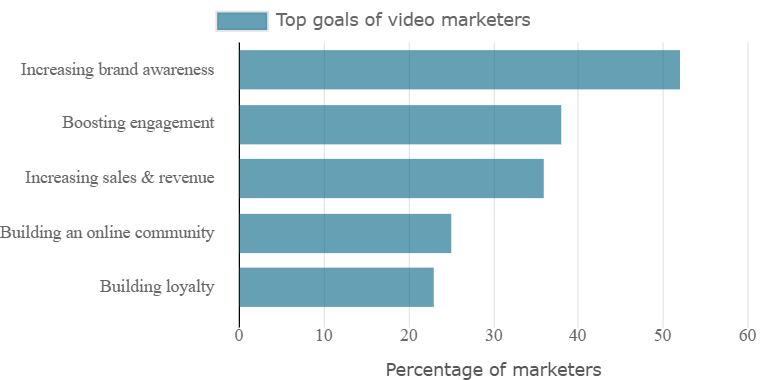
- Use of AI in video strategies:
- 91% of video marketers incorporate AI into their strategies, with popular tools being visual AI generators for images, videos, and design elements.
- AI is mainly used for improving searchability (titles, tags), enhancing visuals (effects, transitions), and creating engaging video content.
- Social media and AI:
- 49% of social media marketers use AI tools for content creation, especially short-form videos, which are considered the most effective for generating ROI.
- 55% of marketers say AI tools are particularly helpful for making short videos.
- Video content types: Short-form videos dominate the strategy (83%), with fewer marketers using long-form (39%) or live videos (14%).
👉 Use of AI in video marketing is steadily increasing
Adding to these video marketing stats are findings from Lemonlight’s 2024 video marketing survey, which sought to understand how marketers and audiences interact with video in the AI age. Here are a few takeaways and video content statistics:
- AI’s growing role in marketing: 96% of marketers believe AI will become even more important in marketing strategies in the coming years, a big increase from 2023.
- Video production and sharing:
- 74% of marketers now post 2–6 videos per month on different platforms, slightly more than in 2023. This growth is largely thanks to AI making video production faster and easier.
- Most marketers (53%) plan to spend $5,000 or less on video projects, while 20% are budgeting $15,000 or more. This shift shows AI is helping lower costs for some while enabling bigger investments for others.
- AI-assisted video types: Over half (55%) of marketers are focusing on AI-assisted videos, like explainer or brand videos, as AI tools simplify storytelling and production processes.
- Platform preferences:
- If they could only use one platform, 32% of marketers would choose YouTube, followed by LinkedIn (28%) and Instagram (22%). These choices reflect small changes in platform popularity.
- For consumers, YouTube, TikTok, and Instagram are the top platforms for watching videos, with TikTok growing the fastest in 2024.
- Consumer habits:
- 62% of people prefer watching videos on their smartphones, with laptops being a distant second at 18%, a trend that’s remained steady.
- Consumers value videos that feel authentic, include personalized elements powered by AI, and have clear messaging and storylines.
Video has become crucial for marketers thanks to its unmatched ability to engage audiences, boost brand awareness, and deliver high ROI. One effective approach is using video in email marketing, which increases click-through rates, captures attention quickly, and delivers messages in a more engaging format. As AI tools continue to streamline video creation and boost its impact, businesses of all sizes are expected to leverage video to enhance connections and innovate.

Content creation statistics
Writing content that convinces and sells isn’t easy — it takes skill, time, and experience. Content marketers report three main content challenges: differentiating content, creating the right content, and creating ‘quality’ content. Top concerns include content personalization, keeping up with the latest trends, and budget constraints.
👉 AI tools are supercharging content creation efficiency
AI writing assistants are making content creation more efficient and effective. They help marketers research topics and grasp complex concepts, making deep dives and long-form posts less challenging to create. From generating SEO briefs to paraphrasing and refining content, AI assistants help speed up content creation. This is evident in the content marketing stats from Semrush:
- Almost 80% of small business owners and marketers write their own content. About 17% hire in-house writers, and 14% use freelancers.
- For marketers not using AI, writing a long article takes 2-3 hours. But 36% of marketers using AI finish in under an hour.
Flying Cat’s latest research reveals the top five uses of AI in content production:
- Creating outlines (92%)
- Idea generation/keyword research (88%)
- Research assistance (80%)
- Writing simple content sections (73%)
- Generating entire blogs to be edited by humans (52%)
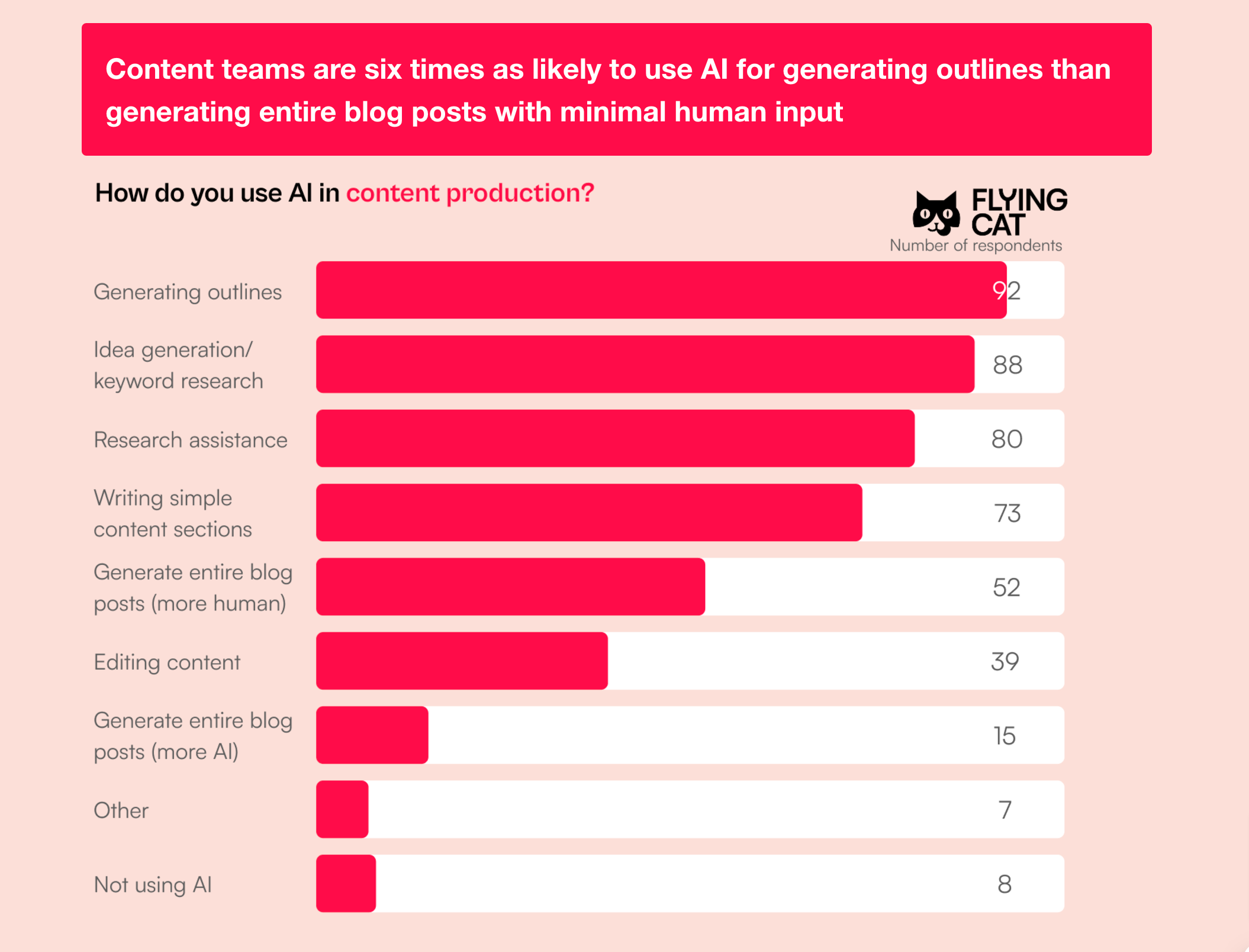
The top five content types created using AI are:
- Long-form top-funnel SEO content (78%)
- Mid-funnel SEO content (67%)
- Product and bottom-funnel SEO content (50%)
- FAQ/glossary pages (48%)
- Landing pages/product pages (41%).
Content marketing ROI statistics
Are marketers measuring content performance? What types of content deliver the highest ROI? Here are some interesting findings:
- 68% of businesses say using AI boosts their content marketing ROI.
- Nearly half (47%) of marketers don’t track ROI from content marketing, even though analyzing performance is crucial.
- 26% of marketers believe good data leads to better returns.
- 49% of businesses report that organic search delivers the best ROI.
- This year’s top marketing channels for ROI are websites/blogs/SEO (16%), social media shopping tools like Instagram Shops (16%), paid social media content (14%), email marketing (14%), and content marketing (14%).
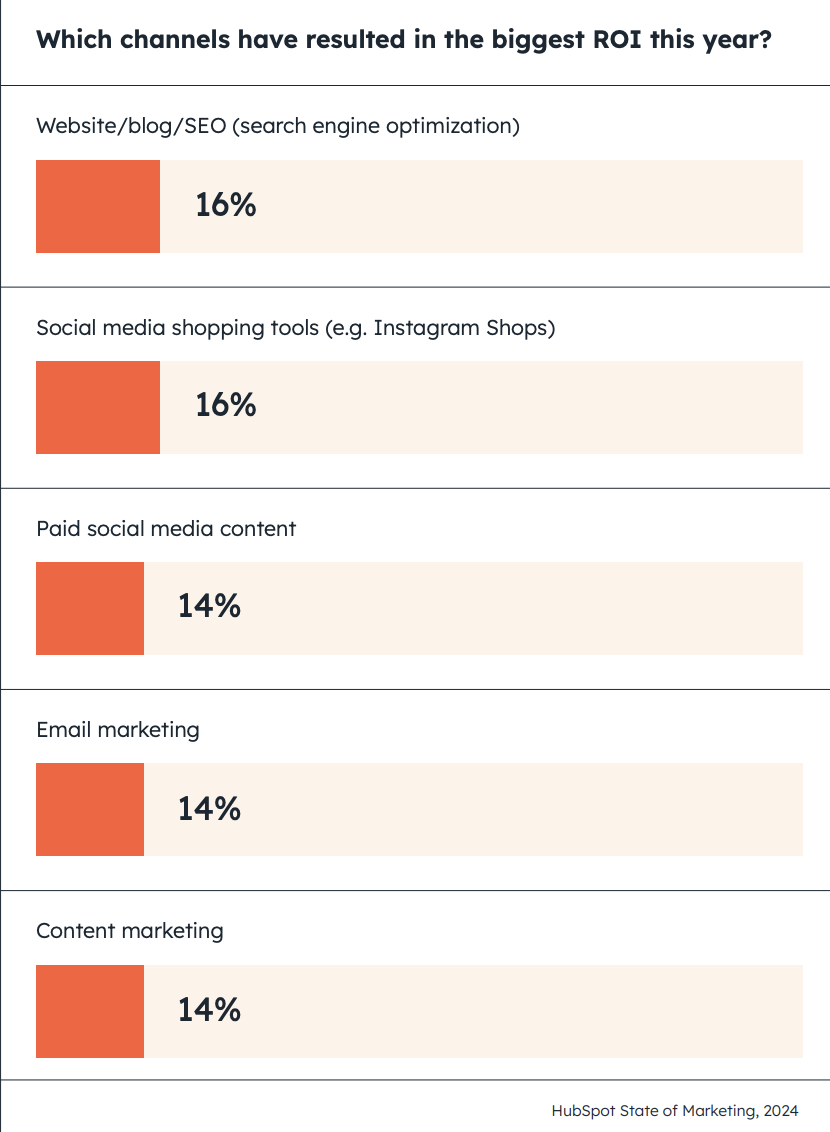
Content strategy statistics
Content marketing continues to evolve, with strategies, budgets, and tools shaping success across industries. From documented plans to AI-powered efficiency, these insights reveal what’s driving results in 2024 and beyond.
- 40% of B2B marketers have a written content marketing strategy, but among the most successful ones, 64% have a documented plan.
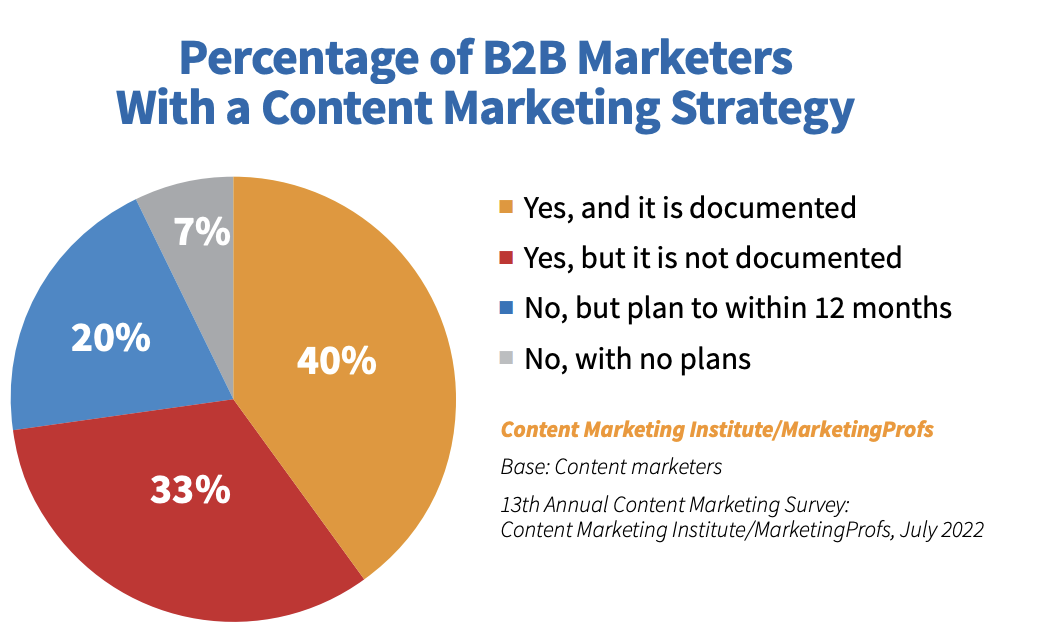
- Most leaders support content marketing, with 42% being mostly on board and 30% fully on board. Only 2% don’t see its value.
- 54% of businesses that spend over $2,000 on a single piece of content report having a successful strategy.
- Nearly half of marketers expect their content marketing budgets to grow in 2025, while 13% think it will shrink, and 41% expect no change.
- Podcasting as a content marketing tool:
- Only 3% of content marketers use podcasts in their strategies.
- 61% of Gen Z visit a company’s website after hearing a podcast ad.
- AI could cut podcast costs by 50%.
- 52% of podcasters use AI to save time by turning audio into text for show notes.
Wishing you greater marketing success in 2025
As the marketing landscape evolves, staying adaptable and informed is key to thriving in this competitive space. Make the most of data, leverage content marketing trends, embrace innovation, and refine your strategies to maximize impact. Here’s to a successful marketing year!
If you’re interested in learning about the latest AI trends in marketing, check out this compilation of useful AI content and marketing statistics.


